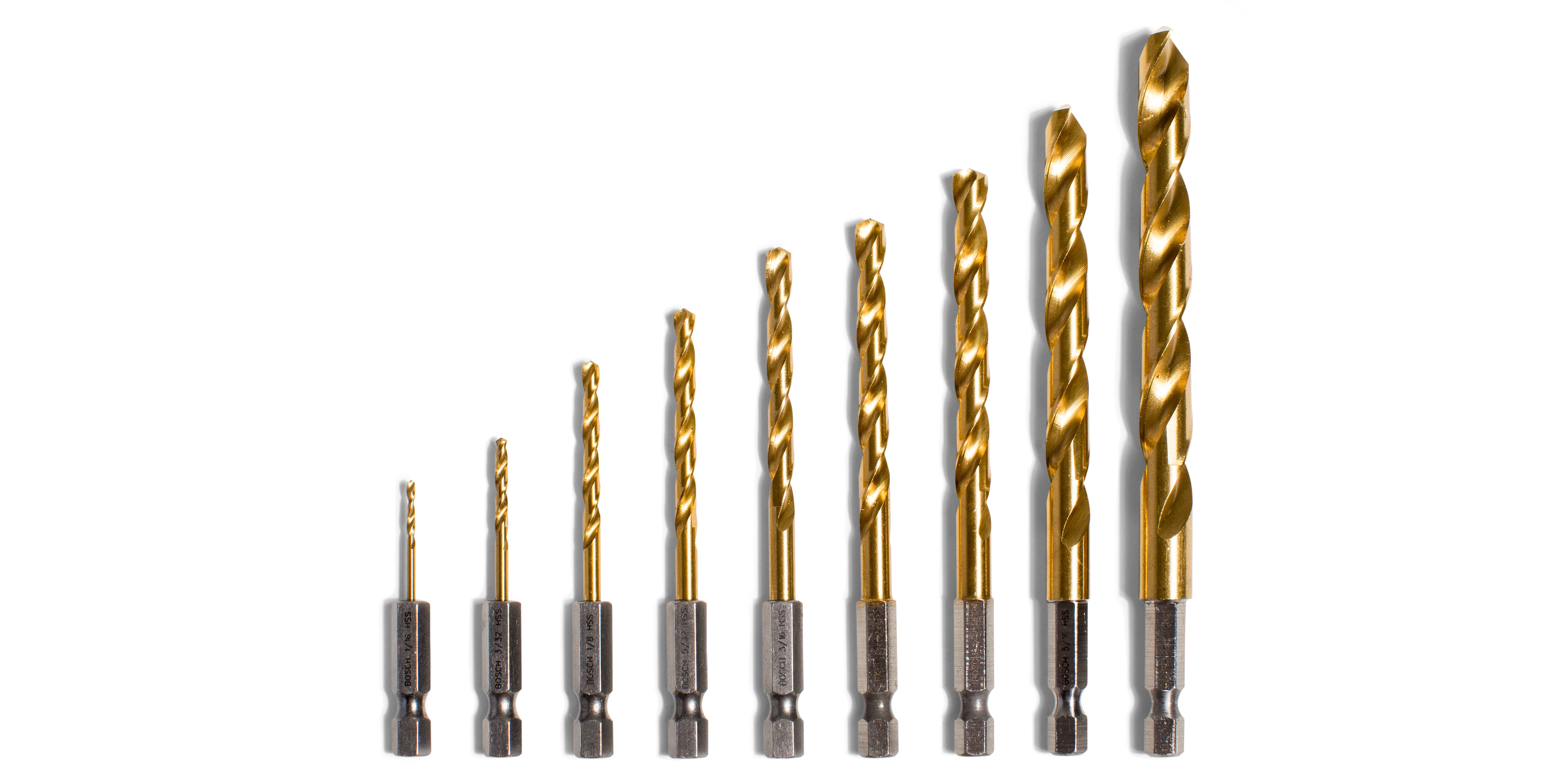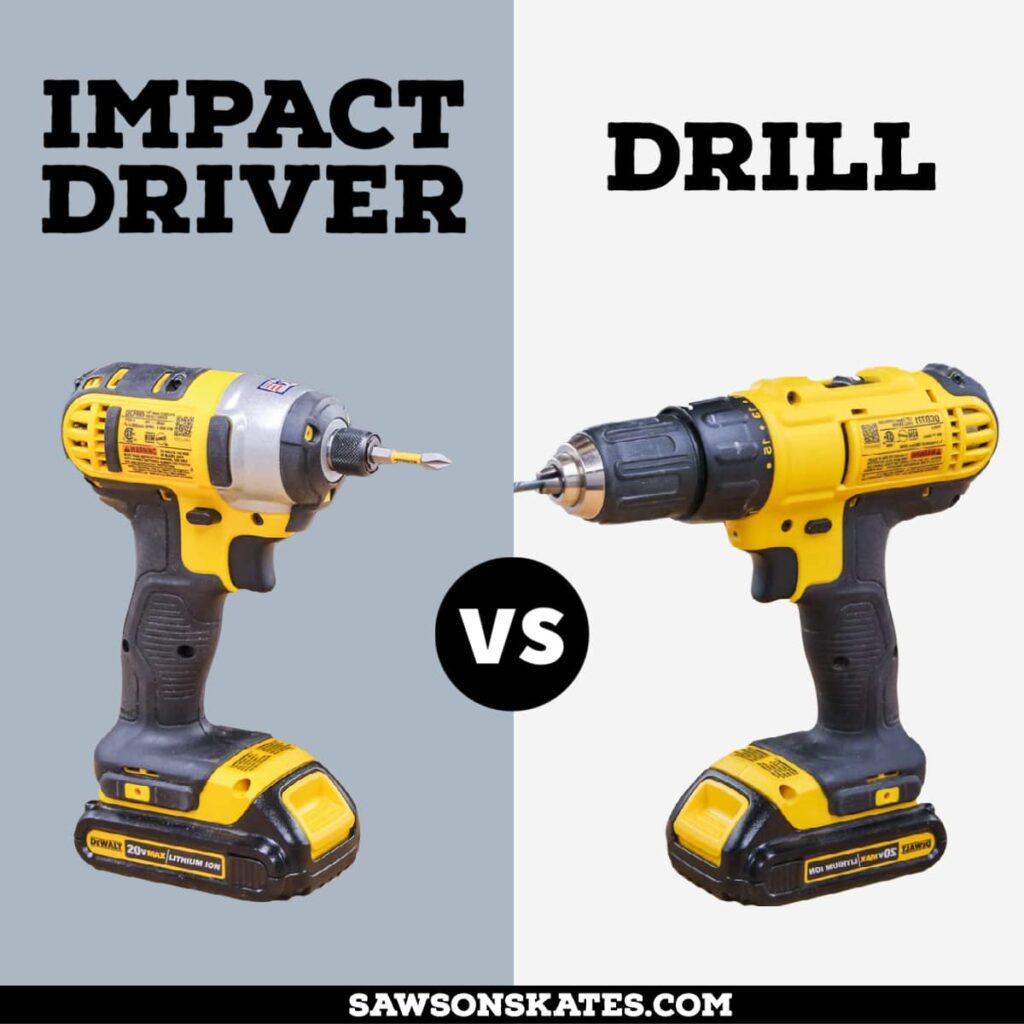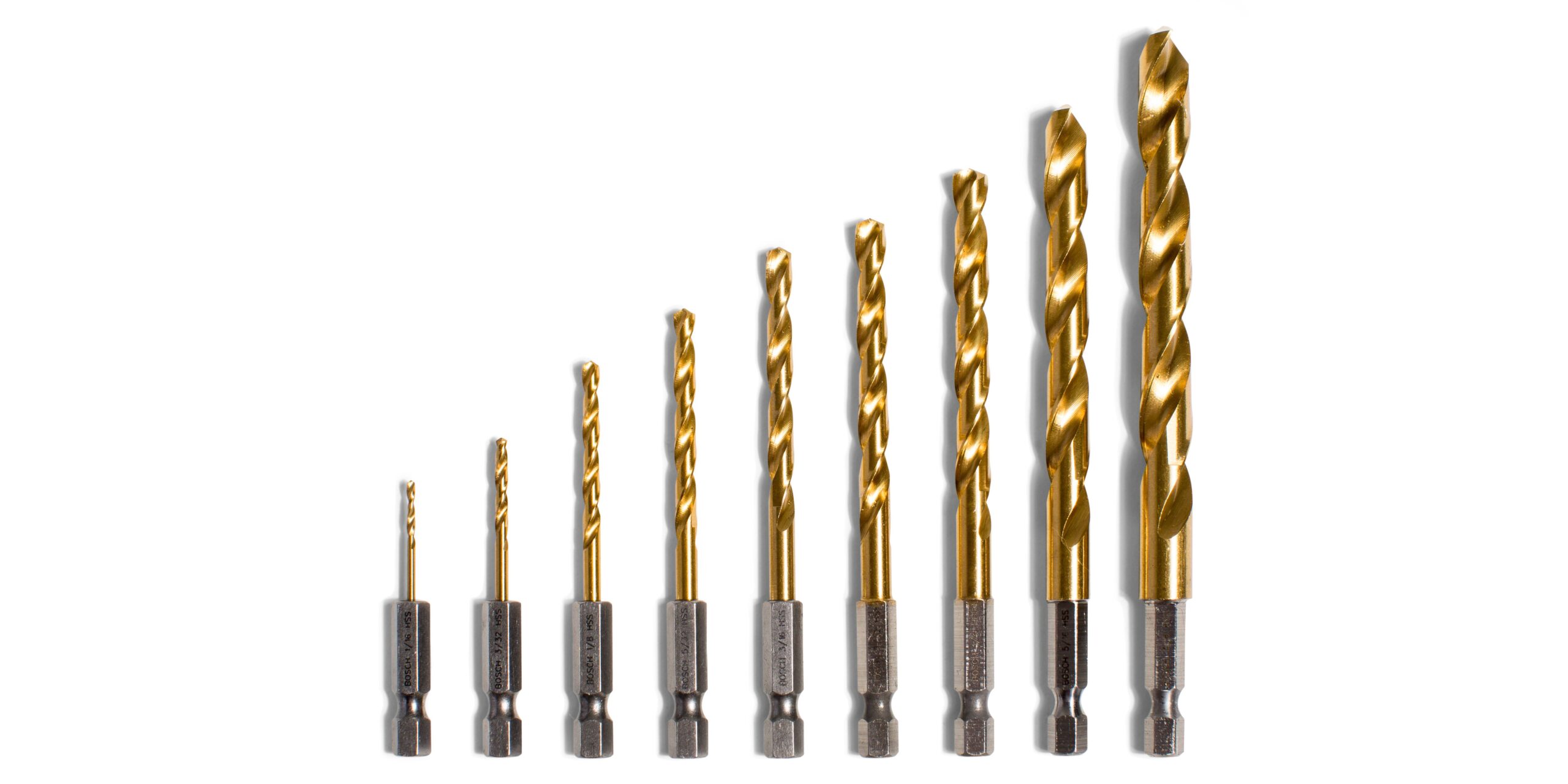Are you wondering if you can use drill bits with an impact driver? Well, let me tell you, my friend, you’ve come to the right place! In this article, we’re going to dive into the exciting world of power tools and explore whether it’s possible to use drill bits with your trusty impact driver. So, buckle up and get ready for a thrilling ride!
Now, you might be wondering why this question even matters. After all, aren’t drill bits and impact drivers both used for drilling? While that’s true, they actually have slight differences in their design and functionality. But fear not, we’ll break it down for you in the simplest terms possible.
So, if you’re ready to delve into the fascinating world of tools and find out if you can use drill bits with an impact driver, let’s get started! It’s time to uncover the truth and equip yourself with the knowledge to make the right choices for your DIY projects. Are you excited? Well, you should be! Let’s jump right in!
Yes, you can use drill bits with an impact driver, but it’s important to select the right bits. Impact drivers have a quick-release hex shank, so you’ll need drill bits with a hexagonal shaft that can fit securely. Additionally, consider using impact-rated drill bits that are designed to withstand the high torque produced by the driver. These bits have a special construction that absorbs the impact force, preventing them from breaking. Remember to always wear safety glasses and follow the manufacturer’s guidelines when using drill bits with an impact driver.

Can You Use Drill Bits with Impact Driver?
1. Understanding the Difference between Drill Bits and Impact Drivers
Before diving into whether or not drill bits can be used with an impact driver, it’s important to understand the fundamental differences between these two tools. Drill bits are primarily designed for drilling holes in various materials, such as wood, metal, or plastic. They feature a spiral-shaped shaft that allows for efficient removal of material as you drill. On the other hand, an impact driver is a high-torque tool specifically designed for driving screws and tightening or loosening bolts and nuts. It delivers quick bursts of rotational force combined with concussive blows to generate high torque without stripping the screw or damaging the material.
While drill bits and impact drivers serve different purposes, they do have some overlap. In certain situations, you can use a drill bit with an impact driver, but it’s essential to consider the compatibility and limitations of both tools.
When using drill bits with an impact driver, it’s crucial to ensure that the bit’s shank matches the driver’s chuck size. Most impact drivers have a 1/4-inch hexagonal chuck that accommodates hexagonal shank drill bits. However, some impact drivers also feature a 1/2-inch square drive that can be used with compatible drill bits.
2. Compatible Drill Bits for an Impact Driver
While many standard drill bits can be used with an impact driver, there are specific types that are better suited for this purpose. One of the most popular options is the hex shank drill bit, which features a hexagonal shank that fits securely into the impact driver’s chuck. This design eliminates slippage and allows for efficient power transfer from the impact driver to the drill bit.
Another compatible option is the impact-rated twist drill bit. These drill bits are specifically engineered to withstand the high-torque output of an impact driver. They typically feature a reinforced design with a thicker shank and a modified cutting edge to handle the intense forces generated by the impact driver.
For drilling in masonry or concrete, there are masonry drill bits with hex shanks that can be used with an impact driver. These bits are designed to penetrate tough materials and can be a more convenient option when compared to traditional hammer drills.
3. Benefits of Using Drill Bits with an Impact Driver
Using drill bits with an impact driver has several advantages. Firstly, it provides greater versatility, as you can use the impact driver for drilling holes in addition to its primary function of driving screws. This eliminates the need for a separate drill, saving you both time and money.
Additionally, the high-torque output of the impact driver combined with a compatible drill bit allows for faster and more efficient drilling. The impact action of the driver helps to break through tough materials quickly, resulting in smoother and cleaner holes.
Using an impact driver for drilling can also be less fatiguing compared to using a standard drill. The rotational force and concussive blows generated by the impact driver minimize the effort required on your part, making drilling tasks easier and less strenuous.
Using Drill Bits with an Impact Driver: Best Practices
To ensure a successful and safe experience when using drill bits with an impact driver, there are a few best practices to keep in mind:
1. Use Impact-Rated Drill Bits:
When using an impact driver, it’s best to use drill bits that are specifically designed to withstand the high torque generated by the tool. Impact-rated drill bits are constructed with stronger materials and have advanced designs to handle the intense forces without breaking or becoming damaged.
2. Secure the Drill Bit Properly:
Ensure that the drill bit is securely and properly inserted into the impact driver’s chuck. This will prevent slippage and allow for efficient power transfer. Check that the chuck is tightened securely before starting any drilling tasks.
3. Match the Drill Bit to the Material:
Choose the appropriate type and size of drill bit for the material you are drilling. Different materials require different drill bit types and sizes to achieve optimal results. Using the wrong drill bit can result in damage to the material, decreased drilling efficiency, or even injury.
4. Apply Steady Pressure:
When drilling with an impact driver, it’s important to apply steady but not excessive pressure. Let the impact driver do the work, and avoid forcing the drill bit into the material. Applying too much pressure can lead to overheating, premature wear of the bit, or damage to the material.
5. Wear Appropriate Safety Gear:
Always wear safety glasses and other appropriate protective gear when using an impact driver and drill bits. This will protect your eyes from debris and ensure your safety during the drilling process.
6. Practice on a Scrap Piece of Material:
If you’re new to using drill bits with an impact driver, it’s a good idea to practice on a scrap piece of material first. This will allow you to familiarize yourself with the tool’s operation and get a feel for how the impact driver and drill bit combination perform.
Can You Use Drill Bits with Impact Drivers in Summary
In conclusion, while drill bits and impact drivers serve different primary functions, there are situations where you can use drill bits with an impact driver. By using compatible drill bits, such as hex shank or impact-rated twist drill bits, you can expand the capabilities of your impact driver and enhance drilling efficiency. However, it’s essential to follow best practices and consider the limitations of both tools. When used correctly and safely, using drill bits with an impact driver can provide greater versatility, faster drilling, and less fatigue. Remember to always use impact-rated drill bits, secure the drill bit properly, match the drill bit to the material, and apply steady pressure for optimal results.
Key Takeaways: Can You Use Drill Bits with an Impact Driver?
- Yes, you can use drill bits with an impact driver.
- However, using impact driver-specific bits is recommended for best results.
- Impact drivers are designed for fast and powerful screwdriving tasks.
- Drill bits are better suited for drilling holes in various materials.
- Using drill bits with an impact driver may cause damage to the tool and reduce its effectiveness.
Frequently Asked Questions
Here are some common questions about using drill bits with an impact driver:
1. Can I use regular drill bits with an impact driver?
Yes, you can use regular drill bits with an impact driver. However, it’s important to note that impact drivers are designed to work best with special impact-rated bits. Regular bits may not be able to withstand the high torque and rotational forces generated by an impact driver, leading to breakage or poor performance. To ensure the best results, it’s recommended to use impact-rated bits specifically designed for use with impact drivers.
Impact-rated bits are made from stronger materials and have a special design that helps absorb the excessive force generated by the impact driver. These bits are less likely to break or wear out prematurely. So while you can technically use regular drill bits, using impact-rated bits will give you better results and prolong the lifespan of your tools.
2. Are impact-rated drill bits more expensive than regular drill bits?
Yes, generally, impact-rated drill bits are more expensive than regular drill bits. This is because impact-rated bits are made from stronger materials that can withstand the high torque and rotational forces of an impact driver. The extra durability and design features of impact-rated bits contribute to their higher price.
However, it’s important to consider the long-term cost-effectiveness of using impact-rated bits. These bits are less likely to break or wear out, meaning you won’t have to replace them as frequently as regular bits. Additionally, they provide better performance and efficiency when used with an impact driver. So, while impact-rated bits may have a higher upfront cost, they can save you money in the long run by reducing the need for frequent bit replacements.
3. Can I use regular drill bits with an impact driver if I’m only doing light-duty tasks?
If you’re only doing light-duty tasks, you may be able to get away with using regular drill bits with an impact driver. However, it’s still recommended to use impact-rated bits whenever possible. Even light-duty tasks can put some strain on drill bits, and using impact-rated bits will ensure better performance and longevity.
Keep in mind that impact-rated bits are designed to handle the high torque and rotational forces of an impact driver, providing better control and reducing the risk of breakage. They are specially engineered to absorb the excess force, protecting both the bit and the tool. So, even if you’re not tackling heavy-duty projects, using impact-rated bits is still a wise choice.
4. Can an impact driver replace a regular drill?
While an impact driver can handle many drilling tasks, it cannot completely replace a regular drill. Impact drivers are primarily designed for driving screws and tightening or loosening nuts and bolts. They excel at tasks that require high torque and rotational force. However, regular drills offer more versatility and precision when it comes to drilling into various materials and using different drill bits.
If you need to drill large holes, work with delicate materials, or use specialized types of drill bits (such as spade bits or hole saws), a regular drill would be a better choice. Regular drills are generally lighter, more compact, and have adjustable speed settings that make them more suitable for drilling applications.
5. Can I use an impact driver for drilling into concrete or masonry?
Impact drivers are not specifically designed for drilling into concrete or masonry. While they can exert a tremendous amount of force, they lack the hammering action provided by a rotary hammer or hammer drill, which is necessary for drilling into dense materials like concrete or masonry.
If you need to drill into concrete or masonry, it’s recommended to use a rotary hammer or hammer drill. These tools are designed specifically for such tasks and have special features like a hammering mechanism that helps break through tough materials. They will provide better results and prevent unnecessary strain on your impact driver.

Summary
So, to sum it up, using drill bits with an impact driver is not recommended. Impact drivers are designed to provide high torque for driving screws and bolts, not for drilling holes. Using drill bits with an impact driver can lead to excessive heat buildup, bit breakage, and even damage to the impact driver itself. It’s best to use a drill for drilling and an impact driver for driving screws and bolts.
However, if you really need to use an impact driver for drilling, make sure to use impact-rated drill bits. These are specifically designed to withstand the high torque and hammering action of an impact driver. But still, it’s always better to use the right tool for the right job to ensure safety and efficiency.
